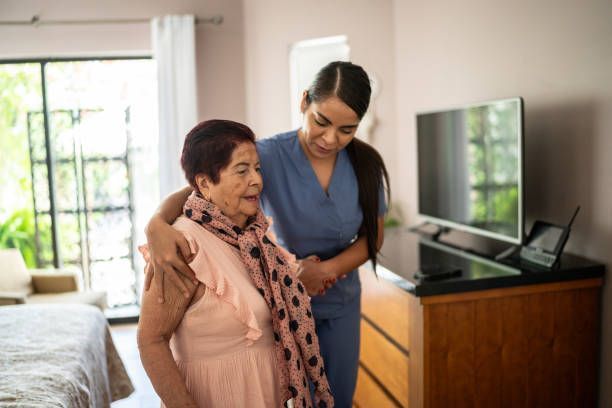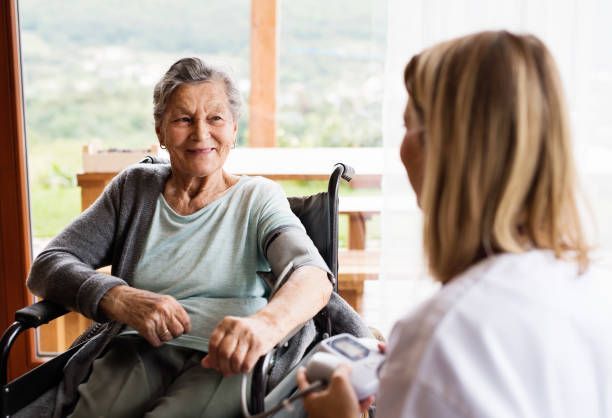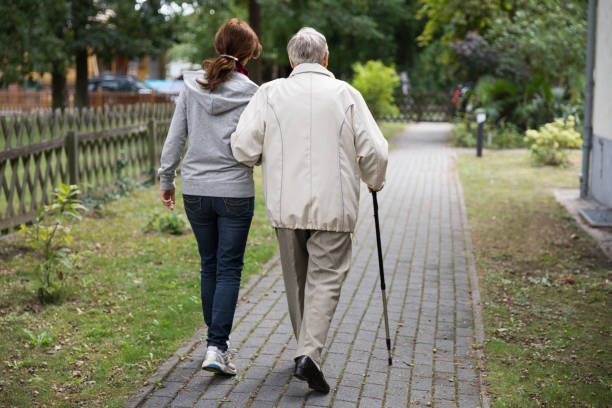How Long Can You Live with Leg Ulcers? Complete Guide for Families
Quick Answer:
People with leg ulcers have a
5-year survival rate of about 52%, compared with
68% in similar individuals without ulcers. Life expectancy depends heavily on ulcer type (arterial vs. venous), underlying health conditions like diabetes or heart disease, and the quality of wound care and home support received.
While these numbers can sound worrying, they don’t tell the whole story. Leg ulcers are not a death sentence — they’re a signal that the body needs more support and attention. In this guide, 7 Day Home Care explains what leg ulcers mean for overall health and life expectancy, the factors that truly influence recovery, and how compassionate home support can make all the difference for seniors and their families.

If Your Loved One Has a Leg Ulcer, Here’s What You Need to Know
If your elderly parent or loved one has developed a leg ulcer that won’t heal, you’re probably feeling anxious about what it means for their future. Doctors may mention “chronic wounds,” “poor circulation,” or “vascular disease,” and it’s natural to wonder — how serious is this?
The truth is that leg ulcers are far more than just a wound. They are often a warning sign of underlying health issues like diabetes, heart disease, or poor blood flow. But with proper treatment and consistent in-home care, many seniors live comfortably for years.
This guide by 7 Day Home Care, a leading New York agency providing compassionate non-medical home care for seniors, explains what leg ulcers mean for life expectancy — and, most importantly, how families can support their loved ones through safe, consistent in-home care.
What Are Leg Ulcers and Why Do They Matter?
A leg ulcer is an open sore on the lower leg or ankle that fails to heal within 4–6 weeks. These wounds can be painful, drain fluid, and make walking difficult. Most leg ulcers occur in older adults and are caused by one of three main conditions:
| Ulcer Type | Main Cause | Common In |
|---|---|---|
| Venous ulcer | Poor blood return from legs ( venous insufficiency ) | Elderly adults, obesity, varicose veins |
| Arterial ulcer | Poor blood supply due to blocked arteries ( peripheral artery disease ) | Smokers, diabetics, people with heart disease |
| Diabetic ulcer | Nerve damage and circulation issues from diabetes ( neuropathy ) | People with diabetes and nerve damage |
While the wound itself rarely causes death, the underlying health problems behind it — such as cardiovascular disease, diabetes, or poor circulation — are what make leg ulcers a serious medical warning sign. Addressing the root cause early, along with consistent wound care and home support, can greatly improve both healing and life expectancy.
How Long Do People Live with Leg Ulcers?
Leg ulcers are associated with higher mortality rates compared with age-matched individuals who do not have ulcers. Several studies have shown that:
- The 5-year survival rate among people with chronic leg ulcers is about 52%, versus 68% for those without ulcers. Source: Journal of Vascular Surgery, 1997
- In patients with
arterial leg ulcers, mortality risk is
almost 3 times higher than average.
Source: Acta Dermato-Venereologica, 2021 - People with
diabetic foot or leg ulcers have a
5-year survival of around 55%, similar to some forms of cancer.
Source: National Institutes of Health
5-Year Survival Rates by Ulcer Type:
| Ulcer Type | 5-Year Survival Rate | Main Risk Factors |
|---|---|---|
| Venous ulcers | 60 – 70 % | Blood clots, varicose veins, immobility |
| Arterial ulcers | 40 – 50 % | Heart disease, smoking, peripheral artery disease |
| Diabetic ulcers | 50 – 60 % | Diabetes, neuropathy, infection |
| Mixed ulcers | 45 – 55 % | Multiple vascular conditions |
These numbers don’t mean a person will die from the ulcer itself — but they highlight how important it is to treat the cause, not just the wound.
Can You Die from a Leg Ulcer?
Leg ulcers rarely cause death directly, but they signal severe underlying conditions that significantly raise mortality risk.
Main Causes of Death in Leg Ulcer Patients:
| Cause | Estimated Share of Deaths | Explanation |
|---|---|---|
| Cardiovascular events (heart attack, stroke) | 40 – 50 % | Circulatory disease often underlies the ulcer |
| Infection or sepsis | 15 – 20 % | Ulcer bacteria can enter the bloodstream |
| Kidney failure | 10 – 15 % | Common in people with diabetes and poor circulation |
| Other comorbidities | 25 – 35 % | Includes cancer, lung disease, and general frailty |
So, while a leg ulcer isn’t inherently fatal, it often co-exists with the diseases that are.
Are Leg Ulcers a Sign of Dying?
Not necessarily — but in frail, elderly patients with multiple conditions, non-healing ulcers can indicate declining overall health. Signs that an ulcer may be part of end-stage disease include:
- Repeated infections or hospitalization
- Ulcers lasting more than 12 months despite care
- Poor circulation that prevents healing
- Severe heart, kidney, or lung disease
Even in such cases, compassionate home care and pain-management support can maintain comfort and dignity.
What Happens If a Leg Ulcer Doesn’t Heal?
Non-healing ulcers create a cycle of pain, infection, and immobility. The risks include:
- Cellulitis – spreading skin infection
- Osteomyelitis – bone infection
- Amputation – if infection reaches deep tissue
- Sepsis – potentially fatal bloodstream infection
Ulcers that persist beyond 3 months despite treatment should trigger referral to a vascular or wound-care specialist. In New York, families can contact centers like:
- NYU Langone Wound Healing Center (Manhattan)
- Northwell Health Vascular & Wound Care (Lake Success, NY)
- Mount Sinai Center for Wound Healing
7 Day Home Care coordinates directly with these hospitals to ensure seamless transitions from hospital to home.
Which Type of Leg Ulcer Has the Worst Prognosis?
Arterial ulcers have the lowest survival rate, because they indicate severe peripheral artery disease (PAD) — the same disease process that causes heart attacks and strokes.
Venous ulcers, though painful and recurrent, generally carry a better prognosis because the underlying circulation issue is venous rather than arterial.
Diabetic ulcers fall in between — their danger comes from neuropathy (nerve damage) and infection risk, which can lead to amputations.
Warning Signs Your Leg Ulcer May Be Life-Threatening
Seek immediate medical attention if your loved one experiences:
⚠️ Rapidly spreading redness or swelling
⚠️ Fever, chills, or new confusion
⚠️ Foul-smelling drainage or pus
⚠️ Blackened skin or gangrene
⚠️ Sudden pain decrease (a sign of nerve death)
⚠️ Difficulty breathing or chest pain
Any of these may indicate sepsis or worsening circulation — both medical emergencies.
How to Improve Life Expectancy with Leg Ulcers
Good news: early intervention and consistent home care can dramatically improve outcomes.
1. Treat the Cause, Not Just the Wound
- Manage diabetes, heart disease, kidney disease, and high blood pressure
- Quit smoking and maintain healthy weight
- Get a vascular evaluation (Doppler ultrasound)
2. Follow a Structured Wound-Care Plan
- Regular dressing changes by certified aides or nurses
- Compression therapy for venous ulcers
- Infection monitoring and debridement when needed
3. Improve Nutrition
- High-protein diet (chicken, fish, beans)
- Vitamin C, zinc, and iron support wound healing
- Stay hydrated — dehydration slows recovery
4. Maintain Mobility and Circulation
- Gentle walking, leg elevation, and range-of-motion exercises
- Avoid sitting or standing still for long periods
5. Coordinate Care
At 7 Day Home Care, our Registered Nurses coordinate directly with physicians, vascular surgeons, and wound-care centers to:
- Track healing progress
- Adjust treatment plans
- Prevent recurrence
6. Address Emotional Health
Chronic wounds often lead to depression and isolation. Compassionate companionship, emotional support, and consistent care can restore both hope and confidence.
How to Talk to Your Doctor About Prognosis
Empower your family by asking:
- What’s the type and cause of this ulcer (venous, arterial, diabetic)?
- How’s the circulation in the leg — do we need a vascular test?
- Are there any signs of infection or bone involvement?
- What’s the healing goal and timeline?
- What home-care support or follow-up is recommended?
Understanding these answers will help you make informed care decisions.
Frequently Asked Questions
Can you die from a leg ulcer?
Leg ulcers rarely kill directly, but they signal serious diseases that can. Cardiovascular events and infections are the main causes of death among people with leg ulcers. Proper wound care, circulation management, and home support reduce that risk significantly.
Are leg ulcers a sign of dying?
Not necessarily. Many people live for years with proper care. However, in the frail elderly or those with multiple health problems, a non-healing ulcer can signal overall decline and higher risk of complications.
What happens if a leg ulcer doesn’t heal?
Non-healing ulcers can lead to infection, tissue death, and amputation. Persistent ulcers beyond three months need specialist evaluation to restore circulation and prevent complications.
How long can an elderly person live with a leg ulcer?
It varies widely. Seniors with venous ulcers and few other illnesses may live many years. Those with arterial ulcers, diabetes, and heart disease have lower 5-year survival (around 50–60%). Quality of care makes a major difference.
What’s the worst type of leg ulcer?
Arterial ulcers have the poorest prognosis because they result from blocked arteries. Venous ulcers are more common and usually less dangerous but often recurrent. Diabetic ulcers fall in between and require strict glucose control.
What warning signs mean an ulcer is dangerous?
Watch for fever, spreading redness, odor, black tissue, or confusion — possible signs of infection or sepsis. Seek emergency care right away.
Can good home care improve life expectancy?
Yes. Consistent home care — daily wound checks, medication reminders, mobility assistance, and nutrition support — significantly improves both healing and overall survival.
Local In-Home Care Support in New York
7 Day Home Care proudly serves Manhattan, Queens, Brooklyn, and Long Island, including Nassau and Suffolk Counties.
As a leading provider of non-medical home care services, we help seniors remain safe, comfortable, and independent in their own homes. Our Certified Home Health Aides (HHAs) provide the daily support and companionship families trust — especially for clients recovering from illness, injury, or chronic conditions such as leg ulcers.
Our Home Care Agency Services in New York include:
- Personal care assistance (bathing, dressing, grooming, mobility help)
- Medication reminders and daily supervision
- Meal preparation and nutrition support
- Light housekeeping and laundry assistance
- Companionship and emotional support
- 24-hour live-in or hourly care, tailored to each client’s needs
We specialize in private pay and long-term care insurance arrangements, working directly with major insurers such as Brighthouse, John Hancock, CNA, New York Life, MetLife, Lincoln Financial, UNUM, American Heritage, NYSUT Major Catastrophe Medical, Mutual of Omaha, and Genworth to simplify the care coordination process for families. With 7 Day Home Care, you can trust that your loved one will receive compassionate, reliable in-home support — helping them heal, rest, and live with dignity in the place they know best: home.
Preventive Care Checklist
✅ Manage chronic diseases (diabetes, PAD, hypertension)
✅ Quit smoking
✅ Elevate legs daily
✅ Wear compression stockings if prescribed
✅ Stay active and maintain a healthy diet
✅ Check feet and legs daily for redness or sores
✅ Seek medical help for any wound that lasts more than 2 weeks
The Bottom Line
A leg ulcer doesn’t have to mean the end of independence or quality of life. It’s a serious medical condition — but one that can be managed successfully with proactive care, proper circulation support, and compassionate help at home. Studies show that outcomes improve dramatically when families combine medical treatment, home nursing support, and lifestyle adjustments.
At 7 Day Home Care, we’re committed to helping every client live longer, heal faster, and stay comfortable — at home, where they belong.
Need Help Caring for a Loved One with a Leg Ulcer in New York?
Call 7 Day Home Care at 516-408-0034 or visit www.7dayhomecare.com today for a free consultation. We work closely with each client’s physicians, nurses, and rehabilitation teams to ensure seamless communication and continuity of care at home. While 7 Day Home Care is a non-medical home care agency, our caregivers provide daily assistance, observation, and support that complement medical treatment — helping clients follow care instructions, maintain comfort, and reduce the risk of complications.
7 Day Home Care is the top private pay and long term care insurance in-home care services provider throughout Manhattan, Long Island, NYC, Queens, and Brooklyn, New York, offering peace of mind to families who want trusted, consistent support for their loved ones.
Brian Callahan
7 Day Home Care










